И НАКОНЕЦ...
Если вы хотите узнать еще больше обо всем, что я здесь говорил, заходите на мой сайт:
www.rifters.com
1 Unwins, P. J. R., et al. 1998. Novel nano-organisms from Australian sandstones. American Minerologist 83: 1541—1550.
2 Broad, W.J. 2000. Scientists find smallest form of life, if it lives. NY Times, Jan. 18.
3 Euzeby, J. P. March 2001. List of bacterial names with standing in nomenclature, http://www.bacterio.cict.fr/index.html.
4 Kajander, E. O., et al. 1999. Suggestions from observations on nanobacteria isolated from blood. In Size Limits of Very Small Microorganisms: Proceedings of a Workshop. National Academy Press, Washington. 164 pp.
VKroes et al. 1999. Bacterial diversity within the human subgingival crevice. Proceedings of the National Academy of Sciences of the United States of America 796(25): 14547-14552.
VIRainy, P. В., and E. R. Moxon. 2000. When being hyper keeps you fit. Science 288: 1186-1188.
VIIBlachford, A. 1984. Metavariation and long term evolutionary patterns. M. Sc. thesis, Zoology, University of British Columbia, 140 pp.
VIIIMarsh, M., and H. T. McMahon. 1999. The structural era of endocytosis. Science 285 (5425): 215—220.
IXDecatur, A. L., and D.A.Portnoy. 2000. A PEST-like sequence in Listeriolysin О essential for Listeria monocytogenes pathogenicity. Science 290: 992-995.
XEschenmoser, A. 1999. Chemical etiology of nucleic acid structure. Science 284: 2118—2123.
XIGesteland, R. E, et al. 1999. The RNA World. Cold Spring Harbor Laboratory Press, Cold Spring Harbor, NY. 735 pp.
XIIGray, М. W., et al. 1999. Mitochondrial Evolution. Science 283: 1476-1481.
XIIIOrgel, L. 2000. A simpler nucleic acid. Science 290: 1306-1307.
XIVOrgel, L. and L. Ost. 1999. Did life originate in an RNA world? In Size Limits of Very Small Microorganisms: Proceedings of a Workshop. National Academy Press, Washington. 164 pp.
XVVogel, G. 1998. Finding life's limits. Science 282: 1399.
XVIRasmussen, B. 2000. Filamentous microfossils in a 3,235-million-year-old volcanogenic massive sulphide deposit. Nature 405: 676-679.
XVIILodish, H., et al. 1995. Molecular Cell Biology, 3rd ed. Scientific American Books, W. H. Freeman & Co., NY. 1344 pp.
XVIIISchulz, H.N., et al. 1999. Dense populations of a giant sulfur bacterium in Namibian shelf sediments. Science 284: 493-495.
XIXMacmillan, M. 2000. An Odd Kind of Fame Stories: of Phineas Gage. MIT Press, Cambridge, MA, 576 pp.
XXAnderson, S. W., et al. 1999. Impairment of social and moral behavior related to early damage in human prefrontal cortex. Nature Neuroscience 2: 1032—1037.
XXIDavidson, R. J., et al. 2000. Dysfunction in the neural circuitry of emotion regulation — a possible prelude to violence. Science 289: 591-594.
XXIIZimmer, C. August 2000. Do parasites rule the world? Discover: 80-85.
XXIIIZimmer, C. 2000. Parasites make Scaredy-rats foolhardy. Science 289: 525-527.
XXIVJohn Rennie, J. January, 1992. Living Together. Scientific American.
XXVHuberman, B. A., and R. M. Lukose. 1997. Social Dilemmas and Internet Congestion. Science 277: 535—537.
XXVIMatrix-net's Internet Weather Report, at http://www. mids.org/weather/.
XXVIIBarabasi, A.-L. et al. 1999. Internet: Diameter of the World-Wide Web. Nature 401: 130-131.
XXVIIIParrish, J. K., and Edelstein-Keshet, L. 1999. Complexity, Pattern, and Evolutionary Trade-olfs in Animal Aggregation. Science 284: 99-101.
XXIXKoch, C., and G. Laurent. 1999. Complexity and the nervous system. Science 284: 96-98.
XXXHolland, J. H. 1992. Genetic algorithms. Scientific American, 267 (1): 66—72.
XXXIWilson, D. S. 2000. Nonzero and nonsense: group selection, nonzerosumness, and the Human Gaia Hypothesis. Skeptic 8 (1): 84-89.
XXXIIService, R. 1999. Neurons and silicon get intimate. Science 284: 578-579.
XXXIIIEpisode four of the PBS video series «The Machine that Changed the World»: Go to http://www.otterbein.edu/ home/fac/dvdjstck/CSC100/CSC100TMTCTW.htm#TM for farther information.
XXXIVTegmark, M. 2000. The importance of quantum decoherence in brain processes. Physical Review E61: 4194— 4206.
XXXVQuantum computation in the brain? Decoherence and biological feasibility», abstract of a talk given at the 2000 Tucson Conference by the University of Arizona's Center for Consciousness Studies (available online at http://www.consciousness.arizona.edu/hameroff/decoherence. html# Abstract).
XXXVITeunisse et al. 1996. Visual hallucinations in psychologically normal people: Charles Bonnet's syndrome. Lancet 347: 794-797.
[Цитата из комедии Уильяма Шекспира «Сон в летнюю ночь» (пер. М.Л. Лозинского).]
[Род подвижных колониальных организмов, относящихся к отделу зеленых водорослей. Они обитают в пресных стоячих водоемах и при массовом размножении окрашивают воду в зеленый цвет, вызывая ее цветение.]
[Искусственно выведенные придонные растения, борющиеся с антропогенной эвтрофией водоемов, когда в результате высокой концентрации биогенных веществ начинается активное развитие микрофлоры в верхних слоях воды, снижается ее прозрачность, начинается гибель придонных растений, а вместе с ними и гибель всех прочих организмов. На фоне выраженной гипоксии резко снижается количество кислорода в водоемах.]
[Здесь имеется в виду не только отсылка к известному периоду американской истории, Реконструкции (1865–1877), когда после Гражданской войны происходила реинтеграция южных штатов Конфедерации в состав США, но и к альбому группы R. E. M. «Fables of the Reconstruction» 1985 года, название которого из-за особенностей оформления диска можно прочитать как «Байки Реконструкции», так и «Реконструкция баек».]
[Именно эти структуры прежде всего ответственны за память и за процесс обучения в традиционном смысле, в связи с чем они обладают высокой степенью возбудимости и повышенной синаптической пластичностью.],
[Компьютерная сеть для безопасной передачи данных, основанная Агентством по перспективным исследованиям при министерстве обороны США в 1969 году, первоначально объединявшая четыре университета Соединенных Штатов. Послужила прототипом для создания Интернета.]
Читать дальше
Конец ознакомительного отрывка
Купить книгу


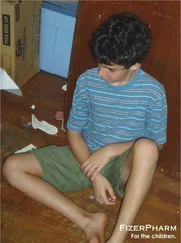
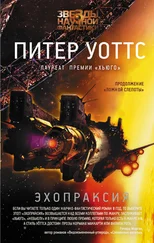

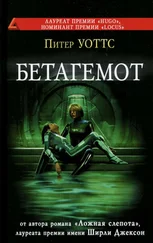
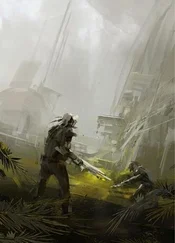
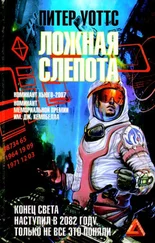
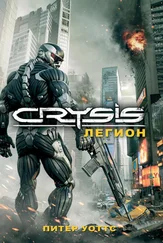

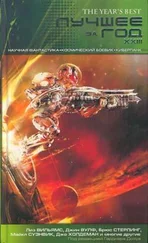
![Питер Уоттс - Водоворот. Запальник. Малак [litres]](/books/420290/piter-uotts-vodovorot-zapalnik-malak-litres-thumb.webp)